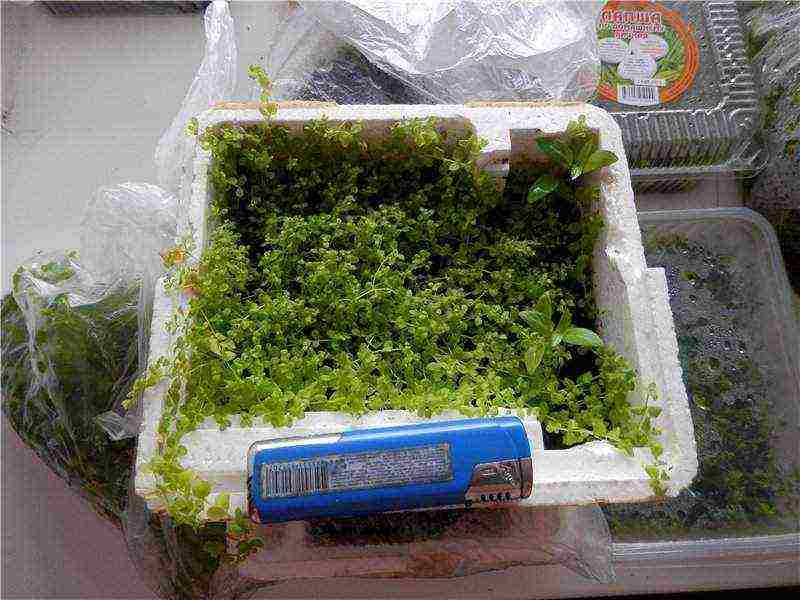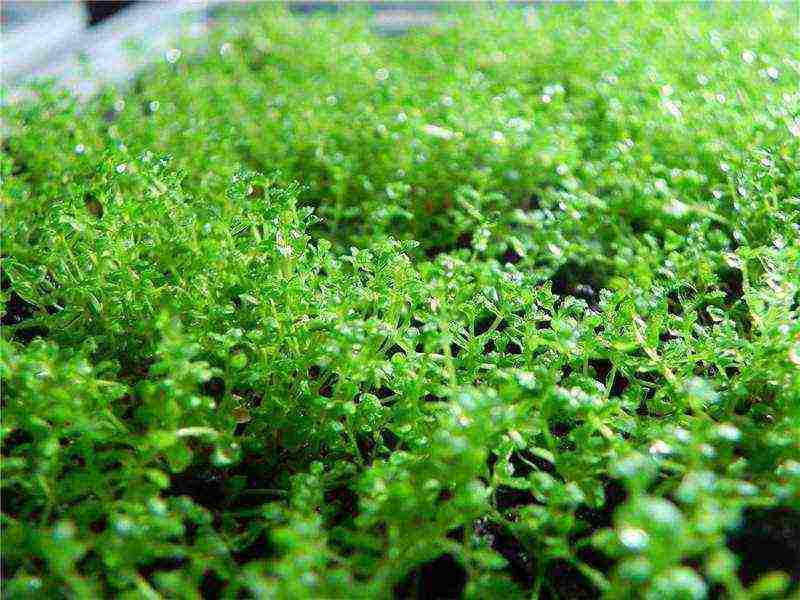I'll start. Maybe someone did not hear, or did not know, or guessed, that plants for the aquarium can be grown outside the aquarium, but in the open ground. Basically, all plants that are cultivated in aquariums are secondary water, which means they can grow in greenhouses, some change their shape when growing in a greenhouse. For example, staurogin becomes long and the leaves change shape, in tripartite the leaves become smaller, Montecarlo becomes light green and the leaves become smaller. Maybe someone else is doing aquarium greenhouses? Who keeps what plants in greenhouses?Here is a photo of a couple of my greenhouses. Montecarlo and staurogin
———-
Cuban plantation))) ground cover Cuba
Sincerely, Alex.
Does anyone grow any plants other than Anubias in greenhouses? I began to grow dwarf eleocharis. I cut out the bottom from under 5 l and 1.5 l bottles, put about 2 cm of soil and planted eleocharis by cutting off its tops (about 50% of the whole plant). I filled it with water and began to observe. Two months later, the meadows grew very densely. I want to try growing a pogestemon and a cube in a greenhouse.
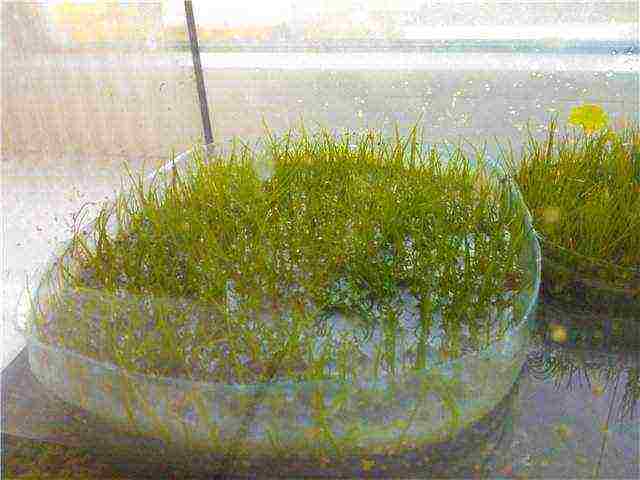
And while wandering around the site, I saw something like moss growing on the ground. I took it with the substrate and put it on a piece of a small stone in a 15-liter greenhouse aquarium (where eleocharis grows). Found a moss that looks like string moss, and the other two look like mosses unknown to me.
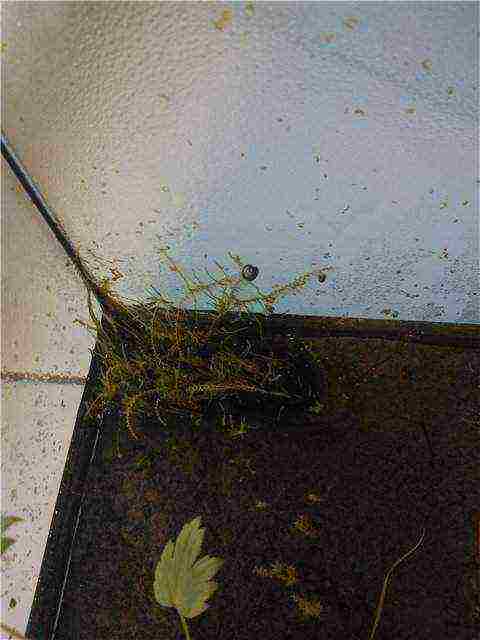
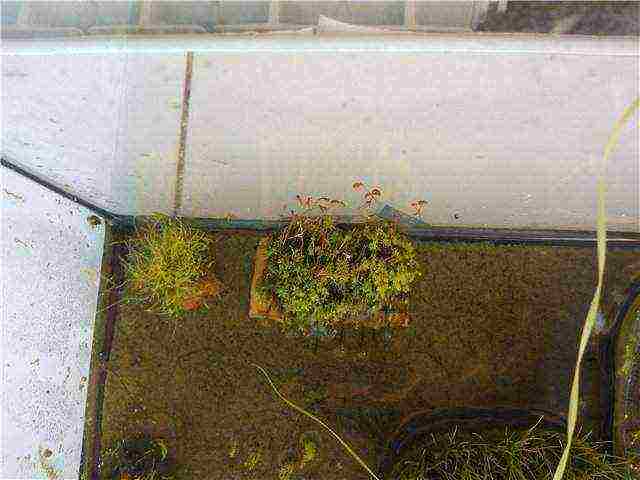
Readers are asked to be lenient.
I am leading, shoveled the forum, and other literature. Based on the information read, questions arose. Which I try to outline below.
Background:
A week ago, I poured a can. It turned out to be about the size of a bucket of grass.
There is no one to give, it is a pity to throw it away. I call my child, I ask - do you want to try to cut money off through Ebay? And I point to a bucket of grass. (And he always has a nubut toy on Wii, so he puts it on Ebay and sells it) I tell him:
take pictures
(I show him an empty 12 liter jar where he can shoot beams) and on the camera, edit it in Photoshop with colors and contrast, color and on Ebay.Well, what do you think? For a week, the bucket of grass is empty - I got rid of it for 50 EUR, now happy as a boa constrictor - the first babos that I hurt myself. And yesterday I come home, I look, and he cuts my grass (and the grass is not superfluous, normal. I tried to cut it while I was away, like I won’t notice it in a 400-liter can). He says it is necessary to finish off a bunch, otherwise one species is not enough, he says, and I have already sold it. And he shows me the weed that he needs, and explains.
- That this is not your plant (like not your dad), not mine, but Uncle Vasya, who has already translated a day for her.
Well, what to do, I had to cut off the grass, and wag my finger so that I would not do this again.
Then we talked with the child, and decided: that I would buy him some kind of jar for a "farm for growing plants without fish", tell him what to plant fast-growing plants, and let him go on Ebay with grass for pocket money.
And he himself is in this, a complete zero! The bank was found without any problems on the newspaper (second hand), they give it for free, then for 5 or 10 EUR. (both dead and normal) Either with a lid, or without a lid. In general, it is not a problem to buy for a penny.
Looked at old farms without fish. A lot of information of any kind, but most are purely descriptions without photos, and I don't catch up with many things myself (I have not found more than one photo or video of a farm for growing plants for an aquarium to see clearly. I only saw most of what is grown in greenhouses for an aquarium, but to farm in the water, I never found). Therefore, I ask for advice on the forum, and I will be glad to receive any information.
What I decided on:
Shelves with holes for a variety of mesh pots. I found the pots at 0.08 cents a pot.
Here is a photo:
This conclusion was made about the pots, based on the article.
It is written there:
That the idea of backfilling a thick layer of soil from materials with high CEC and creating a movement of water under it or introducing fertilizers into the soil in a "drip" way is immediately inconvenient and inconvenient. Which is easier to put a "shelf" with holes for many mesh pots as is done in traditional hydroponics. Put material with a high CEC in the pots - when washed by water, it will constantly receive a supply of nutrients, and the plants will take what they need and how they need - through the roots or through the leaves, or both.
But what shelves to take for this? Do not know. What do you advise.
I saw one
but you won't buy all the pribluda for 70 euros, just from behind the shelf.
I also read that it is suggested to put material in pots (Grodan or Grodan Growcube mineral wool or mineral fiber - a porous material made of basalt wool fibers (for example Rockwool)) with a high CEC
My questions and assumptions:
1. Minvatu Grodan or Grodan Growcube understands, I found it on the Internet.
How does this cotton wool differ from each other? Only in size and holes?
The photo shows that it is of different colors. Is color some indication? Or, something else to look for?
But how to understand this with a high CEC? How can there be Grodan or Grodan Growcube mineral wool or mineral fiber - a porous material made of basalt wool fibers (for example Rockwool) with a high CEC? Is it itself considered a high CEC substrate? Or drip or soak fertilizers into it? NOT what I did not understand! Explain PZhL!
Also explain pzhl about mineral fiber - a porous material made of basalt wool fibers (for example Rockwool) Yesterday I went from a hardware store, there are briquettes (the smallest that can only be carried on a cart) with Rockwool cotton wool, as I understand it, for insulating buildings. Is this stuff okay too? Can I put it in plastic cups? He's like glass wool. Yellowish color.
Here is a photo
There was also information that for species with predominantly root nutrition, the cheapest and most effective substrate with a high CEC is zeolite. What kind of substrate is this? How are the pebbles? What does he look like? Can I put it in plastic cups for the place of cotton wool? Where can I buy it? Or where is it sold, in which stores?
2. CO2 I am thinking of making a bell. In order not to bother.I will calculate the volume of the can, and make the bell of a suitable area, starting from the size of the can.
3. How much waat to do? As far as I understand, it will not be necessary to calculate the light completely for the volume of the can. And where will the shelf start from? The higher the shelf is raised, the smaller the volume of the can, and the less watts per liter are needed. I'm right? Or?
4. Which bank to choose? I am interested in what height should it be? He can take a generally healthy pot of flowers (I have a package of mirror tiles in my basement. Just put mirror tiles on the sides and on the bottom (this is one of the options) BUT, it seems to me cheaper to buy a jar from the newspaper than this pot in store.But, all the same I will be glad to reasonings.
5. In one article I was very surprised that all aquatic, coastal and moisture-loving plants can be kept in a paludarium. The fact that coastal and moisture-loving plants is understandable. But, here's how to understand the FORMULATION of all aquatic, such as Egeria densa or Bacopa caroliniana, etc. can be grown in a paludarium (this is so, informative information for me.)
6. I will make fertilizers myself. I will buy scales, reagents, etc. And even for my can of fish, I was already tortured to buy.
7. What fast-growing plants would you recommend?
I will be glad to any message.
Modified 1-5-2009 by Martin
